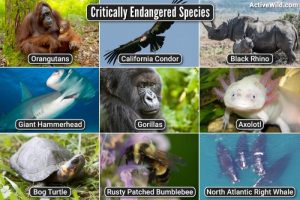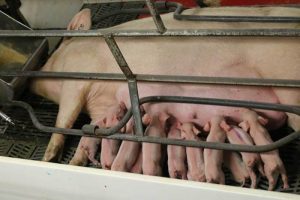
Step into the world of cattle farming for meat and dairy with this in-depth guide that explores the nuances of raising these animals for different purposes. Get ready for an informative and entertaining journey through the ins and outs of this industry!
From breeding practices to environmental considerations, this topic covers everything you need to know about maximizing the potential of your cattle farm. So, buckle up and let’s dive into the fascinating world of raising cattle for meat and dairy!
Raising Cattle for Meat and Dairy
When it comes to raising cattle for meat production versus dairy production, there are significant differences in the management practices and breeding goals.
Raising Cattle for Meat
When raising cattle for meat, key factors to consider include:
- Choosing the right breed that is known for its meat quality and growth rate.
- Providing a balanced diet rich in protein and energy to promote muscle development.
- Maintaining proper health and hygiene practices to prevent diseases and ensure optimal growth.
- Implementing efficient handling and transport practices to reduce stress on the animals.
Genetics in Breeding for Meat or Dairy
Genetics play a crucial role in breeding cattle for meat or dairy purposes. It is essential to select breeding stock with desirable traits such as:
- High meat yield or milk production.
- Good feed efficiency to convert feed into meat or milk efficiently.
- Strong resistance to diseases and adaptability to different environments.
- Overall conformation and structure that align with the production goals.
Animals
Cattle are an essential part of the agriculture industry, providing meat and dairy products to consumers worldwide. There are several different breeds of cattle commonly raised for meat production, each with its unique characteristics and qualities.
Different Breeds of Cattle
- Angus: Known for their marbled meat and excellent beef quality.
- Hereford: Recognized for their hardiness and adaptability to various climates.
- Charolais: Large-framed cattle with good muscling and fast growth rates.
- Limousin: Efficient feed converters with high meat yield.
Welfare of Cattle
Ensuring the welfare of cattle in a farming environment is crucial for their health and productivity. Best practices include:
- Providing ample space for movement and grazing.
- Ensuring access to clean water and nutritious feed.
- Maintaining proper hygiene and sanitation in living areas.
- Regular health check-ups and prompt veterinary care when needed.
Vaccinations and Healthcare
Vaccinations play a vital role in preventing diseases and maintaining the health of cattle. Some common vaccines include:
| Vaccine | Purpose |
|---|---|
| IBR | Protects against Infectious Bovine Rhinotracheitis. |
| BRD | Prevents Bovine Respiratory Disease complex. |
| Blackleg | Guard against Clostridial infections. |
Regular vaccinations, along with proper nutrition and healthcare, are essential for maintaining healthy cattle and ensuring a successful farming operation.
Livestock

Livestock play a crucial role in both meat and dairy production, contributing significantly to the agricultural industry. Cattle are among the most common types of livestock raised for these purposes, with distinct differences in feed requirements and farming practices based on their intended use.
Feed Requirements for Cattle Raised for Meat vs. Dairy
When it comes to feed requirements, cattle raised for meat production generally have a diet focused on promoting rapid growth and muscle development. They are often fed high-energy diets consisting of grains, such as corn and soybeans, to ensure they reach market weight quickly. On the other hand, dairy cattle require a diet that supports high milk production, so their feed is typically more focused on providing the necessary nutrients for milk production, such as alfalfa, hay, and silage.
Impact of Environmental Factors on Cattle Farming Practices
Environmental factors play a significant role in cattle farming practices. Factors such as climate, temperature, and access to water can greatly influence the well-being and productivity of the cattle. Extreme weather conditions, such as droughts or floods, can impact the availability of feed and water, leading to challenges in maintaining the health of the animals. Additionally, environmental sustainability is a growing concern in cattle farming, with a focus on reducing greenhouse gas emissions and minimizing environmental impact through efficient resource utilization.
Process of Weaning Calves in a Cattle Farming Operation
Weaning calves is an essential process in a cattle farming operation as it marks the transition from milk to solid feed. This process typically begins when the calves are around 6-8 months old. To wean calves, farmers gradually reduce their milk intake while introducing them to solid feed. This gradual transition helps the calves adjust to their new diet and ensures their nutritional needs are met as they grow.
Proper weaning practices are crucial for the health and development of the calves, setting them up for a successful transition to adulthood.
Wild Animals

Wild animals can pose potential threats to cattle farms, especially in rural areas where farms are located near natural habitats. Predators such as wolves, coyotes, bears, and mountain lions may target cattle as prey, leading to livestock losses for farmers.
Predator Protection Strategies
- Constructing sturdy fences around pastures to keep predators out.
- Implementing guardian animals such as livestock guardian dogs or llamas to protect the herd.
- Using deterrence methods like noise-making devices or lights to scare off predators.
- Practicing good animal husbandry by keeping cattle close to the farmstead at night.
Importance of Wildlife Conservation
Wildlife conservation is crucial for maintaining the balance of ecosystems and preserving biodiversity. By protecting natural habitats and wildlife populations, we can ensure the long-term sustainability of cattle farming practices. Additionally, conservation efforts can help prevent conflicts between wild animals and livestock, promoting coexistence and harmony in rural landscapes.
Summary
As we wrap up our discussion on raising cattle for meat and dairy, it’s clear that this endeavor requires a unique blend of knowledge, care, and dedication. By understanding the intricacies of this practice, farmers can ensure the well-being of their animals while contributing to the meat and dairy industry. So, whether you’re a seasoned farmer or a newcomer to the field, remember that the journey of raising cattle is not just about the end product but also about the process and the relationships built along the way.
FAQ Corner
What are the key differences between raising cattle for meat and dairy?
Raising cattle for meat focuses on breeding animals for slaughter, while dairy farming involves producing milk for consumption.
How important is genetics when breeding cattle for meat or dairy purposes?
Genetics play a crucial role in determining the quality of meat or milk produced by cattle, influencing factors like growth rate and disease resistance.
What are the main threats posed by wild animals to cattle farms?
Wild animals can threaten cattle farms by predation, disease transmission, and competition for resources.






